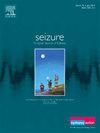儿童癫痫背景脑电图中基于网络的生物标志物-范围综述和叙述综合。
IF 2.7
3区 医学
Q2 CLINICAL NEUROLOGY
引用次数: 0
摘要
背景:脑网络分析是一个新兴的研究领域,它可能导致癫痫的新型生物标志物的开发、测试和验证。这可以缩短诊断的不确定期,改善治疗,降低癫痫发作的风险,并导致更好的管理。本文综述了儿童癫痫的脑电图(EEG)为基础的网络异常的现状。本综述评估了已确定研究的方法框架的总体稳健性、潜在的普遍性、优势和局限性。报告方法:使用PRISMA范围审查指南和PICO框架来指导本次审查。评估儿童脑电图候选网络特征的研究从四个国际索引数据库(Cochrane Central / Embase / MEDLINE/ PsycINFO)中检索。分析了每个选定的研究设计、干预特征、方法学设计、潜在局限性和主要发现。结果:在检索到的2959项研究中,纳入了9项。研究使用了基于群体水平的比较(如基于统计检验)或基于分类的方法(如基于统计模型,如决策树)。一个常见的限制是样本量小(限制了进一步的亚组或混杂分析)以及癫痫综合征和年龄组的总体异质性。结论:纳入研究的异质性(如研究设计、统计框架、结果指标)突出了未来研究坚持标准化框架(如STARD)的必要性,以开发标准化和可靠的方法。这将使研究之间能够进行严格的比较,这对于评估基于网络的方法在开发儿童癫痫新生物标志物方面的潜力至关重要。本文章由计算机程序翻译,如有差异,请以英文原文为准。
Network-based biomarkers in background electroencephalography in childhood epilepsies—A scoping review and narrative synthesis
Background
Brain network analysis is an emerging field of research that could lead to the development, testing and validation of novel biomarkers for epilepsy. This could shorten the diagnostic uncertainty period, improve treatment, decrease seizure risk and lead to better management. This scoping review summarises the current state of electroencephalogram (EEG)-based network abnormalities for childhood epilepsies. The review assesses the overall robustness, potential generalisability, strengths, and limitations of the methodological frameworks of the identified research studies.
Reporting Methods
PRISMA guidelines for Scoping Reviews and the PICO framework was used to guide this review. Studies that evaluated candidate network-based features from EEG in children were retrieved from four international indexing databases (Cochrane Central / Embase / MEDLINE/ PsycINFO). Each selected study design, intervention characteristics, methodological design, potential limitations, and key findings were analysed.
Results
Of 2,959 studies retrieved, nine were included. Studies used a group-level based comparison (e.g. based on a statistical test) or a classification-based method (e.g. based on a statistical model, such as a decision tree). A common limitation was the small sample-sizes (limiting further subgroup or confounder analysis) and the overall heterogeneity in epilepsy syndromes and age groups.
Conclusion
The heterogeneity of included studies (e.g. study design, statistical framework, outcome metrics) highlights the need for future studies to adhere to standardised frameworks (e.g. STARD) in order to develop standardised and robust methodologies. This would enable rigorous comparisons between studies, which is critical in assessing the potential of network-based approaches in developing novel biomarkers for childhood epilepsies.
求助全文
通过发布文献求助,成功后即可免费获取论文全文。
去求助
来源期刊

Seizure-European Journal of Epilepsy
医学-临床神经学
CiteScore
5.60
自引率
6.70%
发文量
231
审稿时长
34 days
期刊介绍:
Seizure - European Journal of Epilepsy is an international journal owned by Epilepsy Action (the largest member led epilepsy organisation in the UK). It provides a forum for papers on all topics related to epilepsy and seizure disorders.
 求助内容:
求助内容: 应助结果提醒方式:
应助结果提醒方式:


